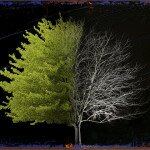Trees of Life and Trees of Death (2)
Solving the Problem
Dead men don’t bite, as an English saying goes. In the same vein, a tree already lying on the ground cannot collapse on anyone or destroy a building. It should be regarded as a golden rule that any tree (ritual or not) which has the potential of growing so tall that its fall can constitute serious danger to life and property must be regarded as “an accident just waiting to happen” and must be either felled or drastically pruned. Unfortunately, the base of large trees is often a shaded and comfortable site for usual markets, community gatherings, and fetish shrines. Within a few years of commencement of such uses, permanent residential and non-residential buildings start aggregating there, fully authorized by government officials or tacitly condoned or approved by the elders and other community leaders.
The snow-balling of buildings and intensification of land use around those trees further reinforce the position and authority of some of the community leaders whose self-assigned responsibility it is to declare and insist that ritual trees must not be touched by anyone because the deities represented by those trees protect the people. These leaders must be told without any equivocation that their belief, declaration, and insistence are arrant nonsense and unmitigated superstitious self-delusion. If the deities were alive, awake, and really doing their job, what did they have against the numerous men, women, and children in many communities who have perished miserably under their watchful eyes and in their protective ambience? Were all those people, killed by their own visible sentinels (the trees), not worth protecting? This is Nigeria 2013, not Nigeria 1913.
If most of those leaders concerned are resident close to the ritual trees, one may be tempted to believe that they are truly convinced about what they preach. The contrary is the case, as the vast majority resides well away from the locations of those ancestral trees. These include the traditional priests, much unlike reverend fathers and pastors who live in houses right next to their church buildings. To confound matters, we know of several instances where the same leaders, who had been strenuously trying to impose a “stay-clear, no-felling” order for decades, had made a sudden u-turn. They found themselves in serious need of money, agreed to ignore the deities concerned, and decided to fell some trees in the ancestral grove for the timber to be sawn and sold. When questioned on what they themselves would normally consider to be “desecration”, they would glibly reply that they had appeased the gods.
Even here, there is still the problem of ensuring that the tree being felled collapses in a pre-determined direction and causes minimal damage. Ordinarily, this is a difficult feat when buildings are all over the place and is an exceptionally tricky and dangerous affair while the wind is blowing. Expert tree handlers know what to do, but one may visualize what can happen when the wind itself decides to do the felling!
All said, the bottom line is that trees, no matter how named, qualified, glorified, adored, or used, should never be allowed to attain a dangerous height, and the ones which have already reached such a height should be felled or cut back now. If adequate regulation exists in our law books in this specific regard (and we plead ignorance here), then rigid enforcement is called for. If none exists, the federal and State Governments should promulgate one, with Local Governments and communities taking a cue there-from and formulating their own bye-laws. Laws take time to pass, or even to re-visit. Therefore, we surge that without waiting for legislation to be announced, the following courses of action should be embarked upon.
1. The enlightened members of the various communities should liaise with their town union officials and traditional rulers, do a quick and inexpensive non-instrumental survey of their communities, and fell or trim trees that need to be cut down or modified, engaging if necessary the services of the Forestry Department especially by way of planting trees elsewhere in replacement of those cut down.
2. Heads of educational and other institutions as well as Ministerial departments, corporations, and other organizations who oversee spaces and land uses where large trees constitute a potential danger, e.g. The High Court premises in Owerri metropolis, are well advised also to check their premises and take corrective action, particularly since many workers, hawkers, and the public at large often sit and park under the canopies of the trees.
3. Likewise, individual land-owners and house-holders are equally informed or reminded that any tree, including bananas and plantains, that grows higher than, say, five metres, can inflict significant damage when thrown against a building or motor vehicle by violent wind. Obviously, the taller the tree gets the greater its damage potential becomes. Two or more adjoining compounds may then be simultaneously in danger, implying that neighbouring house-holders must cooperate by ensuring that one’s trees do not threatens his neighbour’s premises. This is a commonsensical expectation, yet far too many situations occur in which people bluntly refuse to cut down or prune their trees that endanger lives and property in adjacent premises. In such circumstances, requisite courses of action would include (more) prayers, further appeals to conscience, representations to community leaders and village/town union executives, applications to Local Government Authorities and the forestry Department of the Ministry of agriculture, and court action. Inaction is totally out of the question for the trees keep growing bigger and the threat keeps getting larger.
Conclusion
We must remain eternally grateful to God for creating trees for human sustenance and enjoyment, and at the same time we must use the brains he gave us to ensure that the same trees does not constitute a source of misery, destruction and death.
To be contd…
___________________________________________
Professor Uzo M. Igbozuruike, Department of Geography and Environmental Management Imo State University, Owerri, Nigeria. 08033273814.Read also Related Posts
Comments
comments


 Trees of Life and Trees of Death (1)
Trees of Life and Trees of Death (1)
 Response to Emergencies
Response to Emergencies
